The obvious and subtle aspects of bone health: Spinal alignment and energy movement
2Your spine is the structural center of your body. A stooped posture with a concave chest often accompanies bone loss. Our goal in working with posture for bone health is to keep the spine strong and supple by aligning the spinal curves over one another and by mobilizing them in all possible directions.
Align your spinal curves for better posture and stronger core
Your spine and all the surrounding structures function best when the spinal curves are stacked on top of each other in the upright position. To keep the spine healthy and supple, we need to A. Stabilize the curves by stacking them and strengthening the supporting structures around them, and B. Mobilize them by moving them together and independently in all main directions – forward bends, backbends, lateral bends, twists, and axial extension postures. This is exactly what we do in this yoga practice. We combine spinal mobilization with spinal stabilization to build better alignment and communication between your curves. We try to find an upright position that requires minimal effort to maintain, which helps to release tension in all supporting musculature – your neck, shoulders, hips, and back. The more structurally aligned your body is, the less pain you will have, and the more you will feel at ease.
According to the yoga tradition, the spine is also an energetic center of the body. Traditionally, yoga poses were meant to move the energy – prana – in different directions throughout the body, culminating in the energy rising up along the spine to ensure our growth and development. Two particular currents of prana, Samana Vayu and Vyana Vayu, are also involved in bone health because they affect the movement of calcium throughout the system.
Calcium enters the body in food and gets extracted from it within the digestive system. This extraction is guided by the energy of Samana Vayu. Afterward, calcium gets distributed throughout the body by the blood; this process is guided by Vyana Vayu. Balanced calcium levels within the body are achieved by the hormones excreted by the thyroid and parathyroid glands. High or low levels of these hormones can adversely affect bone strength and density.
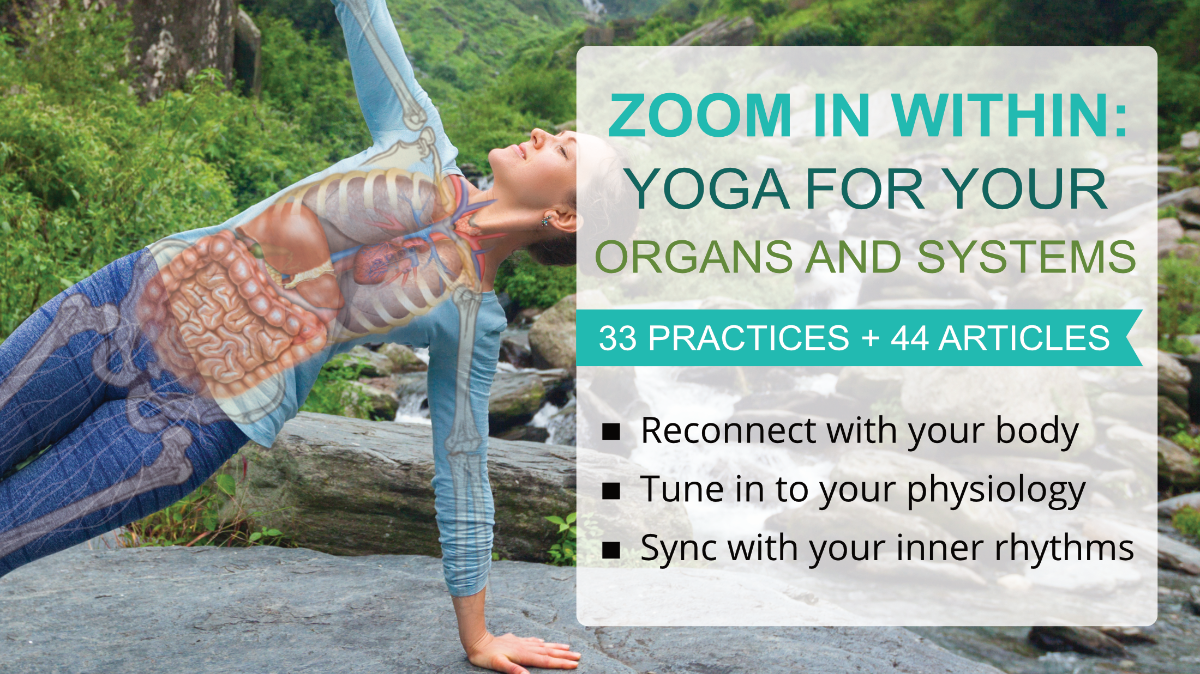
To learn more about your skeletal system, try our complete yoga series Zoom in Within: Yoga for Your Organs and Systems. In this series, we will explore several layers of our physiology: skeletal, respiratory, digestive, immune, cardiovascular, and nervous systems to develop a better theoretical understanding and intuitive awareness of what’s going on “under the hood.” In the series, we explore each physiological system through three different lenses:
- Structure and function (the Western science lens). We will discuss the major players (organs and tissues) within each physiological system and their function. We will also highlight what can go wrong and how we can try to prevent it with the choices we make.
- Movement of nourishment (the Yogic lens): We will follow the movement of energy throughout the system to observe the patterns of imbalance and common themes between different systems to see the full picture.
- Individual characteristics and predispositions (the Ayurvedic lens): We will analyze how your inborn constitution affects your predisposition to certain diseases and imbalances and the actions you can take to correct the imbalances and live more attuned to your natural rhythms.
Check out the series >
[jetpack_subscription_form]

Editable sequences to both practices are available to Sequence Wiz members. Just copy them to My Sequences, make any changes you wish, and send them to your students.
Learn more about Sequence Wiz membership >

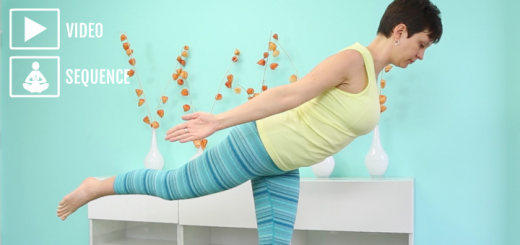
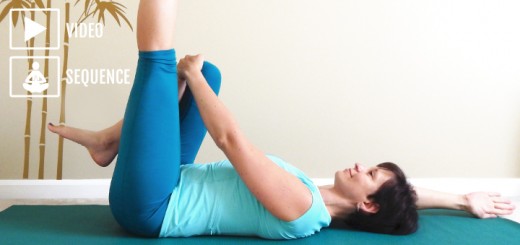
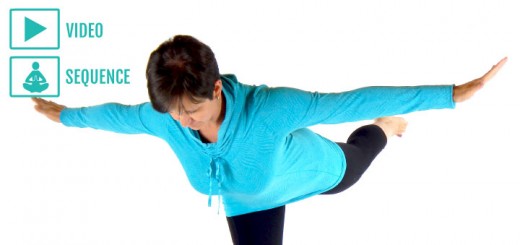
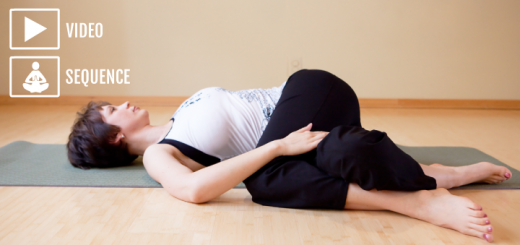















Hello Oga
I would like ask if you still do the figures to follow your lesson sequence please
Thank you
Maria
Muchas gracias Olga por compartir de modo tan sencillo tu sabiduría.??